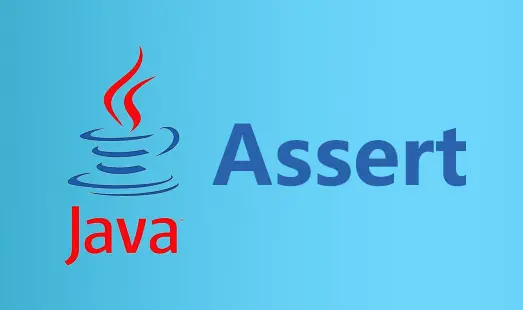一、事务属性
1、事务的传播行为
① 概念
事务方法 A 直接或间接调用事务方法 B,事务方法 A 已经开启的事务如何传播给方法 B 来使用。

② 实际开发中的场景举例
调用的目标方法带有事务,后面的 AOP 的通知方法也需要事务,它们是在同一个线程内的,存在事务传播行为。

③ 设置传播行为的属性
1
| @Transactional(readOnly = false, propagation = Propagation.REQUIRED)
|
- 在@Transactional 注解中使用 propagation 属性设置传播行为
- 在 Propagation 枚举类中封装可选的传播行为
- REQUIRED:默认值。
- 当前方法必须工作在事务中。
- 如果在当前方法执行前,线程上没有已经开启的事务,那么开启新事务,并在这个事务中运行。
- 如果在当前方法执行前,线程上有已经开启的事务,那么就在这个已经开启的事务中运行。此时有可能和其他方法共用同一个事务。
- 和其他操作共用事务的隐患是:其他操作回滚,当前自己的操作也会跟着一起被回滚。
- REQUIRES_NEW:建议使用。
- 当前方法必须工作在事务中。
- 不论当前方法运行前,线程上是否已经开启了事务,都会开启新的事务,并在这个事务中运行。
- 好处:保证当前方法在事务中运行,而且是自己开的事务,这样就不会受其他方法回滚的影响。
④ 测试代码
在 EmpServiceImpl 中增加了一个方法:updateSingle()
1
2
3
4
5
6
7
8
9
| @Override
@Transactional(readOnly = false)
public void updateSingle() {
Integer empId = 7;
String empName = "CCC";
empDao.updateEmpName(empId, empName);
}
|
创建 PropagationService 接口
1
2
3
4
5
6
7
| package com.atguigu.tx.component.service.api;
public interface PropagationService {
void testPropagation();
}
|
创建 PropagationServiceImpl 类
1
2
3
4
5
6
7
8
9
10
11
12
13
14
15
| package com.atguigu.tx.component.service.impl;
@Service
public class PropagationServiceImpl implements PropagationService {
@Autowired
private EmpService empService;
@Override
@Transactional
public void testPropagation() {
empService.updateTwice();
empService.updateSingle();
}
}
|
juni 测试代码:
1
2
3
4
5
6
7
| @Autowired
private PropagationService propagationService;
@Test
public void testPropagation() {
propagationService.testPropagation();
}
|
⑤ 测试用例
让 empService.updateSingle()会抛出异常。
[1]情况 1:测试 REQUIRED


把 updateTwice()和 updateSingle()这两个方法上都使用下面的设置:
1
| @Transactional(readOnly = false, propagation = Propagation.REQUIRED)
|
效果:两个方法的操作都没有生效,updateSingle()方法回滚,导致 updateTwice()也一起被回滚
因为他们都在 propagationService.testPropagation()方法开启的同一个事务内。
[2]情况 2:测试 REQUIRES_NEW


把 updateTwice()和 updateSingle()这两个方法上都使用下面的设置:
1
| @Transactional(readOnly = false, propagation = Propagation.REQUIRES_NEW)
|
结果:
- updateTwice()没有受影响,成功实现了更新
- updateSingle()自己回滚
原因:上面两个方法各自运行在自己的事务中。
2、事务的隔离级别
① 测试方法说明

② 情景代码补充
[1]EmpDao 补充
1
| String selectEmpNameById(Integer empId);
|
[2]EmpDaoImpl 补充
1
2
3
4
5
6
7
| @Override
public String selectEmpNameById(Integer empId) {
String sql = "select emp_name from t_emp where emp_id=?";
return jdbcTemplate.queryForObject(sql, String.class, empId);
}
|
[3]EmpService 补充
1
2
3
| String getEmpNameById(Integer empId);
void updateEmpName(Integer empId, String empName) throws FileNotFoundException;
|
[4]EmpServiceImpl 补充
1
2
3
4
5
6
7
8
9
10
11
| @Override
@Transactional(isolation = Isolation.READ_UNCOMMITTED)
public String getEmpNameById(Integer empId) {
return empDao.selectEmpNameById(empId);
}
@Override
@Transactional(readOnly = false, propagation = Propagation.REQUIRES_NEW, isolation = Isolation.READ_UNCOMMITTED)
public void updateEmpName(Integer empId, String empName) {
empDao.updateEmpName(empId, empName);
}
|
③ 设置方式(isolation)
在@Transactional 注解中,使用isolation 属性设置事务的隔离级别。可选值包括
1
2
3
4
5
6
7
8
9
10
11
12
13
14
15
16
17
18
19
20
21
22
| public enum Isolation {
DEFAULT(-1),
READ_UNCOMMITTED(1),
READ_COMMITTED(2),
REPEATABLE_READ(4),
SERIALIZABLE(8);
private final int value;
private Isolation(int value) {
this.value = value;
}
public int value() {
return this.value;
}
}
|
④ 测试方法
1
2
3
4
5
6
7
8
9
10
11
12
13
14
| @Test
public void testReadEmpName() {
String empName = empService.getEmpNameById(4);
System.out.println("empName = " + empName);
}
@Test
public void testWriteEmpName() {
Integer empId = 4;
String empName = "UUU";
empService.updateEmpName(empId, empName);
}
|
在读和写方法中分别设置断点,并把两个方法都运行起来
- 在读操作实际执行前让程序停住
- 执行写操作
- 在写操作提交或回滚前执行读操作
- 查看读操作查询到的数据
- 读未提交:会看到读取了写操作尚未提交的修改
- 读已提交:会看到写操作尚未提交的修改被无视了
3、事务回滚的异常(rollbackFor)

设置方式
1
2
3
4
5
6
7
8
9
| @Override
@Transactional(readOnly = false,
propagation = Propagation.REQUIRES_NEW,
isolation = Isolation.READ_COMMITTED,
rollbackFor = Exception.class
)
public void updateEmpName(Integer empId, String empName) {
empDao.updateEmpName(empId, empName);
}
|
在@Transactional 注解中,使用rollbackFor 属性设置事务回滚的异常,使用noRollbackFor 属性设置事务不回滚的异常。
实际开发时通常也建议设置为根据 Exception 异常回滚。
4、只读属性(readOnly)
一个事务如果是做查询操作,可以设置为只读,此时数据库可以针对查询操作来做优化,有利于提高性能。
1
| @Transactional(readOnly = true)
|
如果是针对增删改方法设置只读属性,则会抛出下面异常:
1
2
3
| 表面的异常信息:TransientDataAccessResourceException: PreparedStatementCallback
根本原因:SQLException: Connection is read-only. Queries leading to data modification are not allowed(连接是只读的。查询导向数据的修改是不允许的。)
|
实际开发时建议把查询操作设置为只读。
5、超时属性(timeout)
一个数据库操作有可能因为网络或死锁等问题卡住很长时间,从而导致数据库连接等资源一直处于被占用的状态。
所以我们可以在@Transactional 注解中设置一个超时属性 timeout,让一个事务执行太长时间后,主动回滚。事务结束后把资源释放出来。
1
2
3
4
5
6
7
8
9
10
11
12
13
14
15
16
| @Override
@Transactional(readOnly = false,
propagation = Propagation.REQUIRES_NEW,
isolation = Isolation.READ_COMMITTED,
rollbackFor = Exception.class,
timeout = 10
)
public void updateEmpName(Integer empId, String empName) throws FileNotFoundException, InterruptedException {
TimeUnit.SECONDS.sleep(15);
empDao.updateEmpName(empId, empName);
}
|
6、总结
1
2
3
4
5
6
7
8
9
10
11
12
13
14
15
16
17
18
19
20
21
| @Transactional(
// rollbackFor属性:设置事务回滚的异常
rollbackFor = Exception.class,
// noRollbackFor属性:设置事务不回滚的异常
noRollbackFor = FileNotFoundException.class,
// isolation属性:设置事务的隔离级别
isolation = Isolation.READ_COMMITTED,
// readOnly属性:设置事务的只读属性,只能为纯查询操作设置只读
readOnly = false,
// propagation属性:设置事务的传播行为
// 默认值:REQUIRED(要求必须在事务中运行,如果当前线程上检测到已有事务,则在已有事务内运行;如果没有已开事务,则开启新事务,在新事务内运行)
// 建议值:REQUIRES_NEW(要求必须在事务中运行,不论是否存在已开事务都会开启新事务,并在新事务内运行)
propagation = Propagation.REQUIRES_NEW,
// timeout属性:超时属性(测试时先睡觉再执行SQL才能看到效果)
timeout = 5
|
二、基于 XML 的声明式事务
1、搭建环境
和前面基于注解的一样。
2、配置方式
1
2
3
4
5
6
7
8
9
10
11
12
13
14
15
16
17
18
19
20
21
22
23
24
25
26
27
28
29
30
31
32
33
34
35
36
37
38
39
40
41
42
43
44
45
|
<bean class="org.springframework.jdbc.datasource.DataSourceTransactionManager" id="transactionManager">
<property name="dataSource" ref="druidDataSource"/>
</bean>
<aop:config>
<aop:pointcut id="txPointCut" expression="execution(* *..*Service.*(..))"/>
<aop:advisor advice-ref="txAdvice" pointcut-ref="txPointCut"/>
</aop:config>
<tx:advice id="txAdvice" transaction-manager="transactionManager">
<tx:attributes>
<tx:method name="get*" read-only="true"/>
<tx:method name="query*" read-only="true"/>
<tx:method name="count*" read-only="true"/>
<tx:method name="update*" rollback-for="java.lang.Exception" propagation="REQUIRES_NEW"/>
<tx:method name="insert*" rollback-for="java.lang.Exception" propagation="REQUIRES_NEW"/>
<tx:method name="delete*" rollback-for="java.lang.Exception" propagation="REQUIRES_NEW"/>
</tx:attributes>
</tx:advice>
|
3、注意
虽然切入点表达式已经定位到了所有需要事务的方法,但是在**<tx:attributes>**中还是必须配置事务属性。这两个条件缺一不可。缺少任何一个条件,方法都加不上事务。
另外,tx:advice 导入时需要注意名称空间的值

整个后端学习的经纬体系
纵向需要解决的问题,横向的解决办法。




















